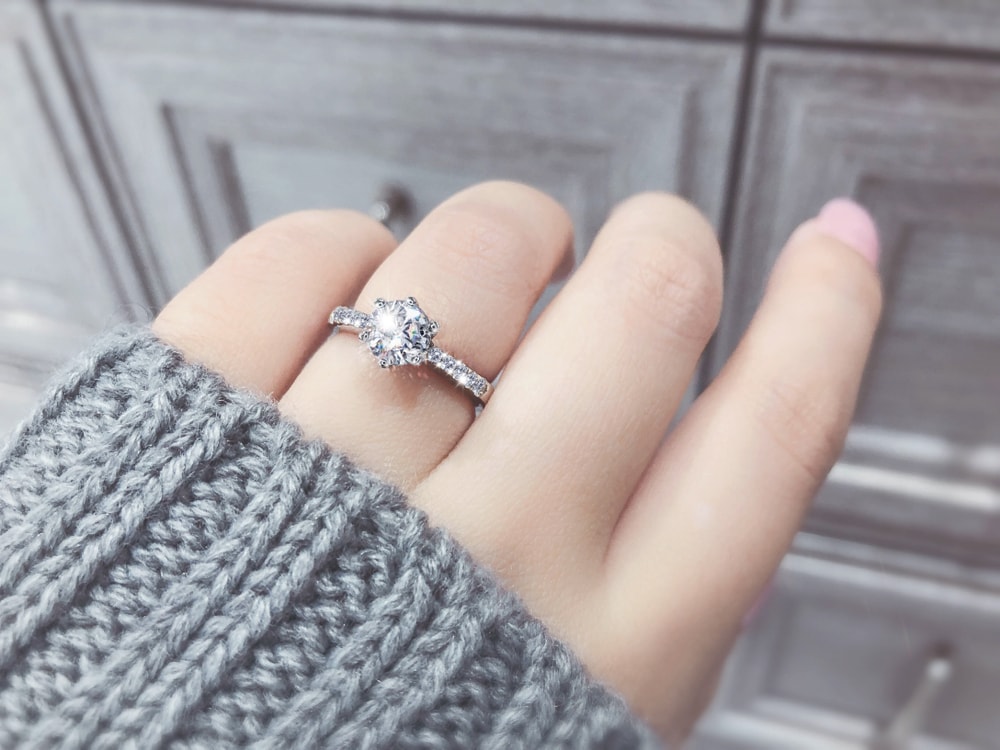
Table of Contents
If you’re leaning towards a large, eye-catching diamond, a 3-carat stone is the perfect choice. It’s much above average in size and will surely turn heads. It’s the definition of a large rock on your finger.
But 3-carat diamond rings are quite a considerable purchase, so it’s important to be well-prepared when approaching it. The diamond jewelry niche is a world of many complicated numbers, terms, and concepts that can be overwhelming, and when it’s for such a large purchase, it can become complicated.
In this buying guide, let’s take a look at what you need to know to help you purchase the right 3 stone diamond for you.
How Big Is A 3-Carat Diamond Exactly?
The carat size of a diamond measures its weight and not its dimensions. 1 carat is equal to 600 milligrams or 0.6 grams, so a 3-carat diamond will weigh exactly 1.8 grams – about the same weight as a raisin.
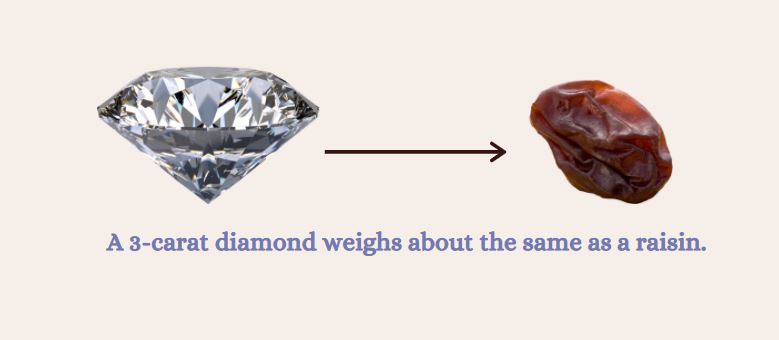
But how big is that exactly in terms of the stone’s size?
This will depend on the cut and shape of the stone, which we’ll cover next. But the proportions you can expect from a 3-carat diamond are around 8x8x6 millimeters. That’s quite sizeable for an engagement ring.
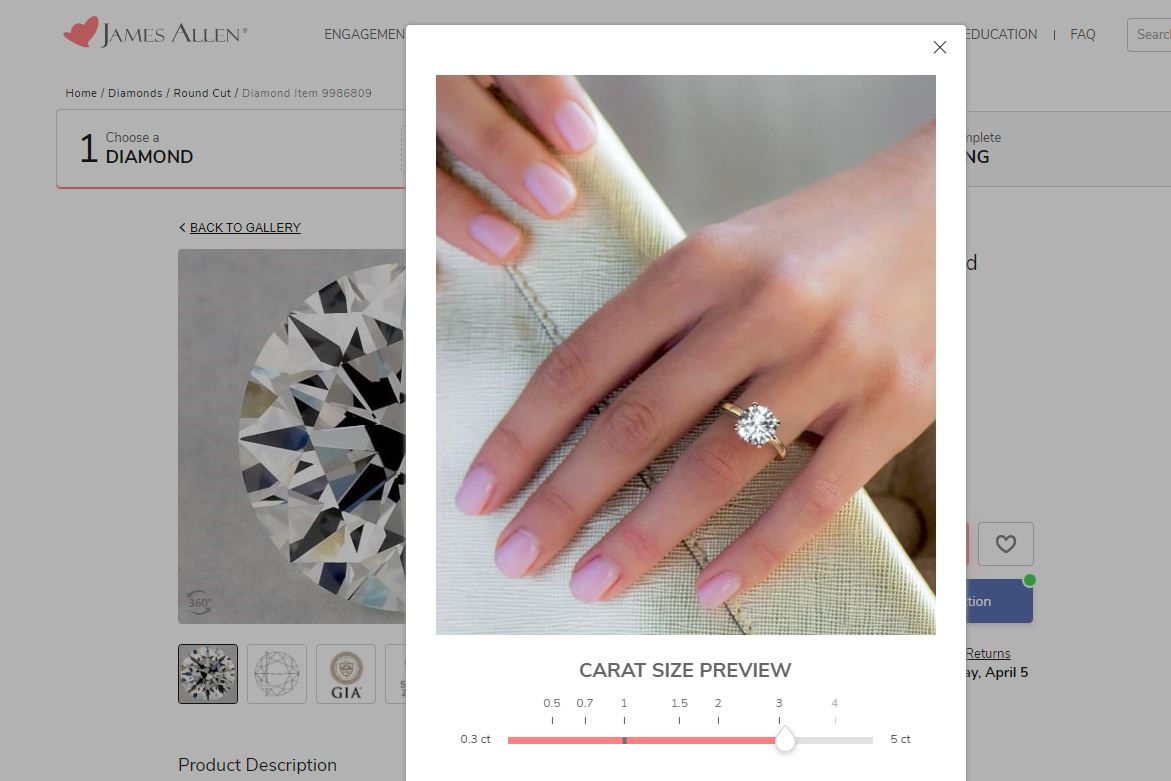
To see how this will look on the average hand, some retailers such as Blue Nile and James Allen offers a useful tool which allows you to choose the size of the diamond and see how it looks on the finger.
This gives you a good representation of the size of a 3-carat diamond in comparison to other popular diamond sizes.
3-Carat Diamond Price
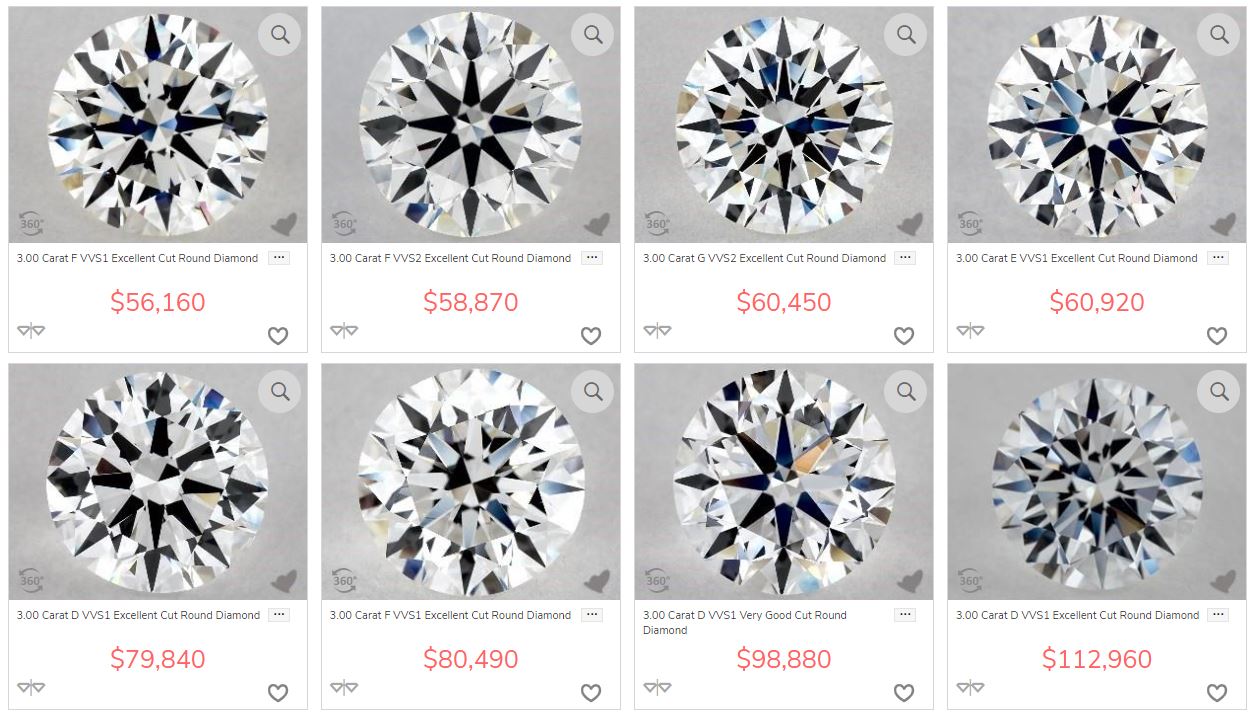
3-carat diamonds will range in price depending on the quality factors of the stone. Carat size is one of the main factors that impact price – the larger the stone, the more expensive it’s going to be.
But factors such as color, clarity, and cut are all essential factors.
For a 3-carat diamond, the price can range can go from anywhere between $19,000 and $95,000, with some going north of $100,000.
Generally, however, you should be able to find some good options in the $20,000 to $30,000 range such as this 3.01 Carat K-VS1 Excellent Cut Round Diamond Six Prong Wire Basket Engagement Ring. That’s an excellent price for such a large diamond, with the only compromise being the lower color grade.
How Important is the Cut of a 3-Carat Diamond?
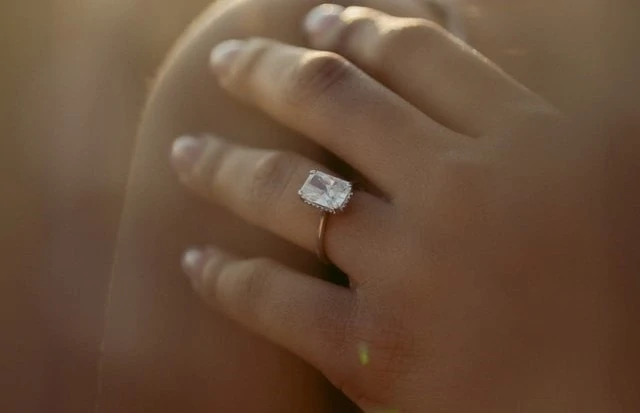
Outside of the carat size, a diamond’s cut is its most important feature. In fact, you’ll see the saying cut is king when it comes to diamonds.
Let’s take a quick moment to distinguish cut from shape. It’s easy to conflate cut with shape but the two are actually different. Cut refers to the diamond’s proportions and the technicalities, such as symmetry, alignment of facets, and any noticeable defects.
Shape refers to the diamond’s geometrical shape. There are 10 main shapes to choose from when it comes to diamonds and gemstones.
So, why is cut all that important?
1. Cut impacts appearance.
Cut is critical for large diamonds, such as 3-carat ones, as every small imperfection can be easily seen in such a large stone. While for a 1-carat diamond you can easily ignore some minor defects, on a 3-carat stone everything is easily noticeable.
These defects don’t just include issues created during the cutting process – they also include the natural internal flaws of the diamond that reduce its clarity. One of the main goals of a diamond’s cut is to hide such flaws.
2. Cut influences light performance.
The cut impacts the quality of the shape, which makes or breaks the beauty of the stone. Each diamond shape has its own physical dimensions and light performance. The cut you choose will bring out the brilliance, fire, and sparkle of the diamond, while showing it to maximum advantage.
For the most brilliant cuts, The round brilliant cut, the oval cut, the princess cut, and the radiant cut produce the most brilliance, typically in that order.
3. Cut impacts size.
What’s more, the cut can make the diamond appear larger than it is. These are the approximate dimensions of 3-carat diamonds depending on their shape:
| Diamond shape | Approximate table surface area |
| Round Brilliant Cut | 9.37×9.37×5.65mm |
| Princess Cut | 7.95×7.95×5.72mm |
| Emerald Cut | 9.64×7.14×4.64mm |
| Asscher Cut | 8.1×8.1×5.27mm |
| Radiant Cut | 8.33×8.33×5.33mm |
| Cushion Cut | 8.4×8.4×5.38mm |
| Oval Diamond | 11.7×7.8×4.76mm |
| Pear Shaped Diamond | 13.05×7.86×4.79mm |
| Heart Shaped Diamond | 9.46×9.46×5.68mm |
| Marquise Diamond | 14.98×7.49×4.57mm |
| Trillion Diamond | 11.16×11.16×4.46mm |
4. Cut influences price.
This should go without saying but the higher the cut grade, the more expensive the stone is going to be. Most experts state that cut shouldn’t be compromised. If your budget allows, go for the highest cut grade possible. For large stones, it really makes a difference as well-cut large diamonds are more brilliant and stunning in appearance.
What Clarity Grade Should Your 3-Carat Diamond Have?
After the diamond carat weight and cut, clarity is the third most important factor. The clarity of a diamond refers to how clear the stone is, and whether it’s devoid of any internal or external inclusions, blemishes, or other flaws.
Most of these are flaws occur naturally and they become a part of the stone during its formation in the Earth’s core. However, some flaws can be due to poor craftsmanship during the cutting process.
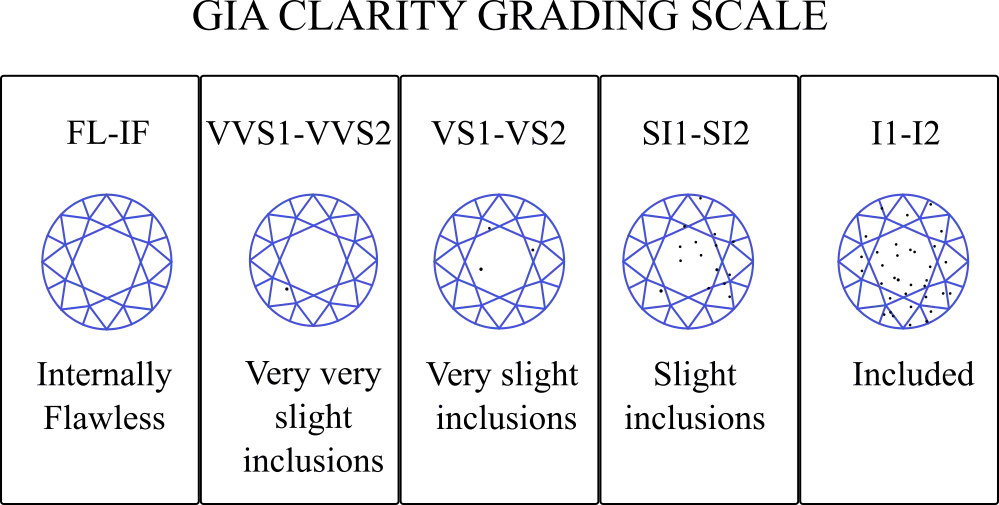
The value of a diamond with good clarity should be obvious – the clearer the stone is, the higher its brilliance and the better its look. While clarity isn’t that important for smaller diamonds, when it comes to 3-carat stones, every flaw is magnified.
Different gemology institutes have different clarity grades but most of the major institutions use the following grading system or a variation of it:
IF (Internally Flawless) and FL (Flawless) diamond: These stones don’t have any internal inclusions that are visible under x10 magnification. 3-carat IF or FL stones look spectacular but are a bit pricey too.
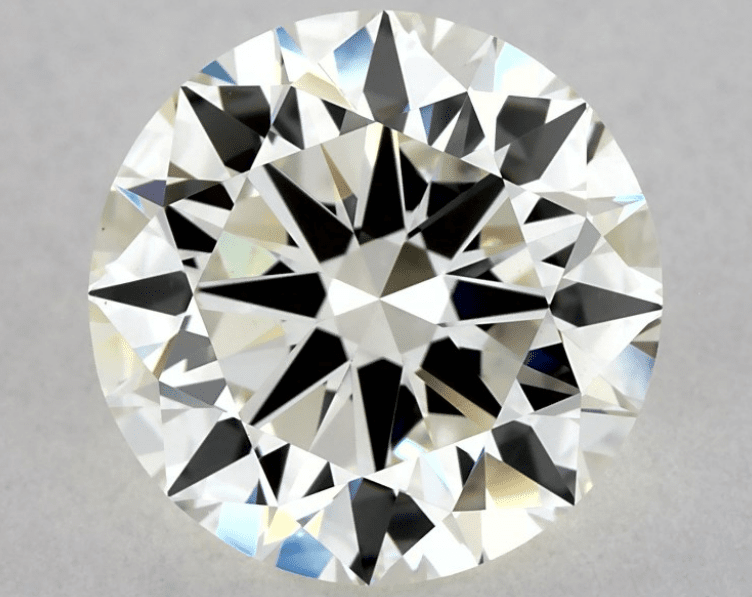
VVS1 & VVS2 (Very Very Slightly Included) diamonds: These diamonds have some minor inclusions but they are invisible to the naked eye and can only be seen under x10 magnification. A VVS1 or VVS2 3-carat stone can look as good as an IF or FL one.
VS1 & VS2 (Very Slightly Included) diamonds: These stones are almost completely clear to the naked eye. Their inclusions are significantly easier to notice with a magnification tool. This tends to be the best budget-friendly option for 3-carat diamonds as it’s the most affordable clarity that’s still eye-clean.
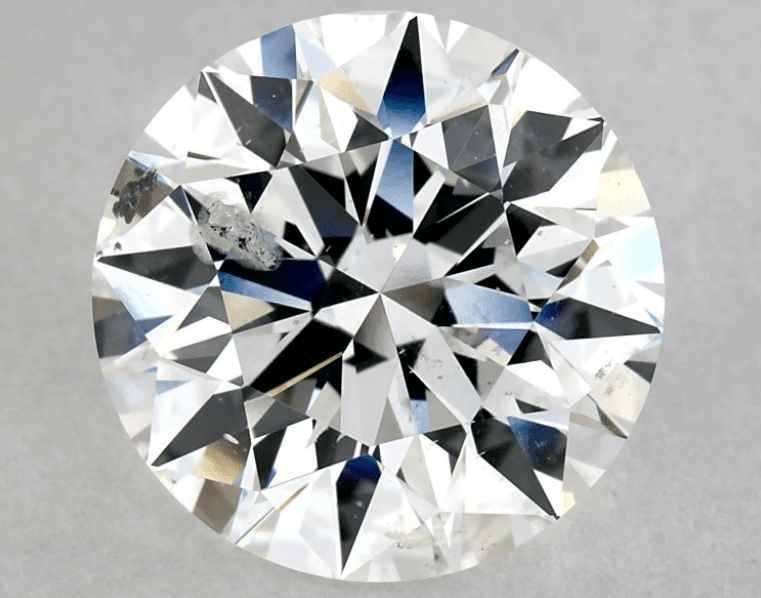
SI1 & SI2 (Slightly Included) diamonds: The inclusions on these two grades are much easier to see with the naked eye. Occasionally, you can find an SI1 or SI2 stone where the inclusions are nicely placed and fit the stone’s color so that they are not easy to see. On a 3-carat stone, however, they’ll almost always be visible.
I1, I2, and I3 (Included) diamonds: These diamonds have many large inclusions that are easy to notice. They are completely unsuitable for a 3-carat diamond.
For 3-carat diamonds, it’s recommended to opt for VS1 and VS2 and above. Always make sure you see the actual diamond rather than a stock image, when purchasing.
Some retailers have HD, 360 degree videos and zoomed in images which allow you to see every aspect of the stone from every angle. In our view, this is even better than seeing the diamond in person, as you get to take your time and view every flaw of the stone with the help of state-of-the-art imaging.
James Allen even offers a Real-Time Diamond Inspection option which lets you see the actual stone in real time.
How Color Impacts a 3-Carat Diamond

The Color (or lack thereof) of colorless diamonds is measured on an alphabetical scale from D to Z. The A, B, and C grades are skipped because in the early days of diamond color grading, gemologists and merchants were abusing these grades too much (A, A+ AAA, AAAAA, etc). So, today, the diamond color grades most gemological institutes use look like this:
- Colorless: The D, E, and F grades – the rarest, best-looking, and most expensive color grades. If you’re budget allows, choose these grades for 3-carat diamonds.
- Near Colorless: The G, H, I, and J grades – great looking and best value color grades.
- Faint Color: The K, L, and M grades – good-looking color grades that can look well with the right setting or ring metal but may not be suitable for a large diamond.
- Very Light Color: N to R grades – the color hues on these stones tend to be too unappealing, especially for larger stones and they are rarely used as centerpiece stones in jewelry.
- Light Color: S to Z grades – these color grades are almost never used in jewelry, especially on large stones such as 3-carat diamonds.
Anything that’d go after Z would be considered a Fancy Colored Diamond. Fancy colored diamonds are actually even rarer than D, E, and F colorless diamonds and are even more expensive.
Of the colorless diamonds’ spectrum, the near colorless range is typically recommended for engagement ring diamonds of any size, including 3-carat stones.
That’s because their slight color hues are almost unnoticeable to the naked eye even on large stones and they are more affordable than D-F color diamonds. However, if budget allows, you can go higher up on the grading scale for the most colorless diamonds.
Best Setting for a 3-Carat Diamond Ring
While a 3-carat diamond looks great in any setting, settings that enhance the size and brilliance of the stone are the best options. These can include halo and solitaire, which add sparkle to the stone without distracting from its size.
Side-stone settings and settings with small melee diamonds, such as channel and pave settings, are also excellent options. They add sparkle and texture to the ring, but it’s important that these elements enhance rather than distract from the ring’s overall look.
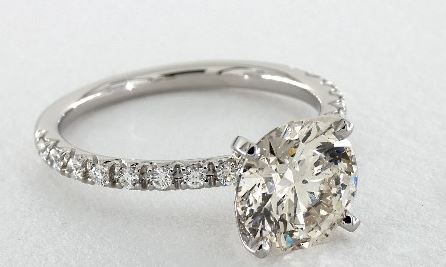
The very purpose of getting such a large stone is for it to catch other people’s attention, to be noticeable, and to sparkle as brilliantly as possible. Open settings such as prong and solitaire achieve this effectively.
The drawback of these settings, however, is that they don’t protect the stone enough – every knock on a hard surface or every drag on a shirt’s sleeve can potentially damage an exposed and unprotected diamond.
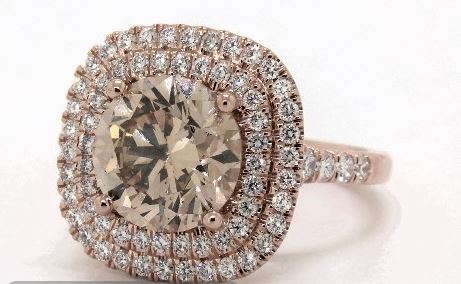
On the other hand, protective settings, such as bezel settings, can keep your 3-carat diamond safe through accidental knocks that’d otherwise scratch and damage it. The trade-off here is that you will be sacrificing some of the diamond’s brilliance and beauty but offering greater protection for the stone.
At the end of the day, the choice is mostly subjective. Consider your lifestyle, budget, and style when choosing the right setting.
Best Metal for a 3-Carat Diamond Engagement Ring
The metal you choose for your 3-carat diamond engagement ring won’t be determined so much by the diamond’s size, but rather by its color and your preferences.
For example, if you’ve chosen a diamond that’s slightly lower on the color scale, then going for yellow gold is probably your best bet. As most colorless diamonds’ hues are typically yellow or brown, yellow gold can effectively mask these imperfections and make it look as if the diamond is completely colorless, and is just reflecting the gold’s color.
If your diamond is near- or fully-colorless, however, you don’t need to worry about such considerations. Whether you choose yellow gold or rose gold, or white metals such as platinum and white gold, they all would look great with a high-quality 3-carat diamond.
In general, rose gold is viewed as the more romantic and feminine option, yellow gold – as the classic and traditional choice, while white metals are more contemporary and formal. Platinum is the strongest of the precious metals and is considered to be a secure choice for such an important purchase.
How to Save on a 3-Carat Diamond?
With smaller diamonds, usually in the 1 to 2-carat range, compromising with the clarity or color is the way to go. Another good idea sometimes is to compromise with the carat weight and to compensate with side stones or pave settings – this is a good way to lower the overall cost of the ring and still end up with a gorgeous-looking jewel.
With 3-carat diamond engagement rings, you can sometimes find excellent diamonds at a slightly lower price point if you drop below the 3-carat mark and opt for something that’s around 2.70 to 2.90. However, it’s not guaranteed that these will be lower in price, as other factors can come into play.
For example, the screenshot below compares two similar diamonds, but what stands out is that the 2.90 carat stone is much more expensive than the 3-carat stone. Other factors, such as fluorescence, polish, symmetry, table and depth, are what’s driving the difference in price.
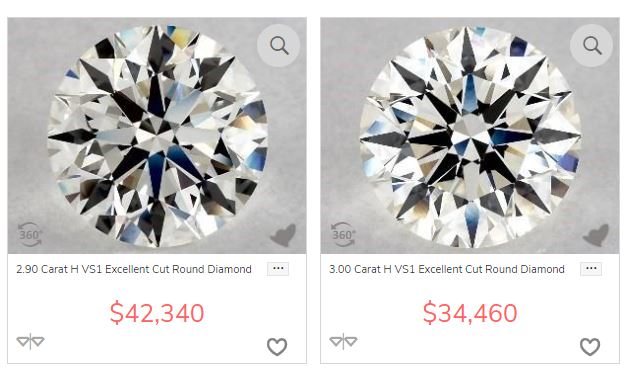
It’s also best not to compromise on clarity when it comes to such large stones – while some minor inclusions can be ignored in 1 to 2-carat diamonds, every small blemish is visible in 3-carat diamonds. Going below the VS1-VS2 clarity range is usually not a good idea.
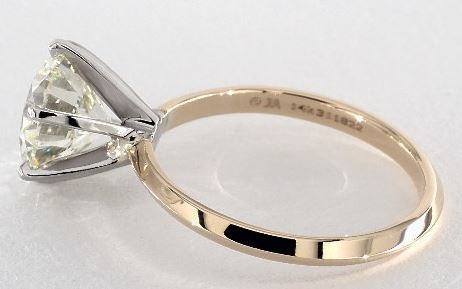
The one area you can compromise without too many consequences is color. The G to J range is usually the recommended color range for the best value for money. However, dropping to the K or L color grades can also be acceptable with the right color metal and setting.
As mentioned above, you could choose a diamond lower on the color scale, and mask or complement its yellow tints with a yellow or rose gold setting.
Should I Buy a Synthetic 3-Carat Diamond?
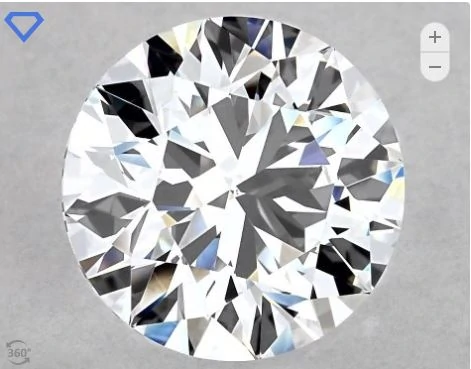
A good alternative to natural 3-carat diamonds is lab-grown 3-carat diamonds. Many people are still somewhat hesitant to consider lab-grown diamonds but the technology with which they are grown today ensures that they are indistinguishable from their natural-grown counterparts.
In fact, lab-grown diamonds have fewer-to-no inclusion or blemishes in them, as they haven’t spent millions of years in the volatile environment of the Earth’s crust. So, their clarity is better than that of natural diamonds.
And with an average price that’s around 3x times lower than that of similar natural diamonds, lab-grown diamonds are a great way to get a big 3-carat diamond without breaking the bank.
If you’re looking to browse synthetic diamonds, see lab-grown diamonds here.
3-Carat Diamond Certificate
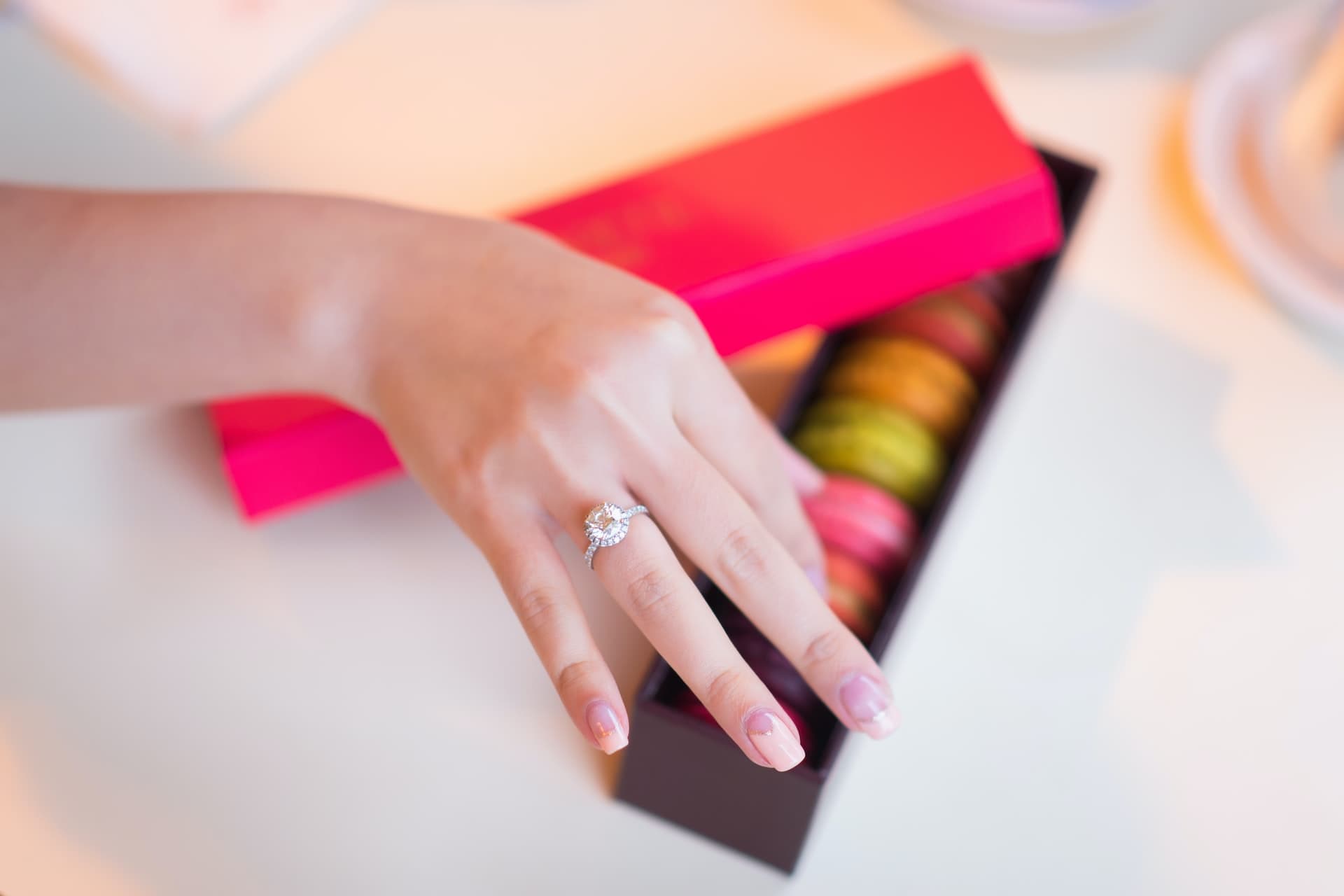
Now that the basics are out of the way, let’s go over the buying process. Where you buy your diamond ring is almost as important as the type of ring you’re buying and there are lots of things to consider here as well.
There are prominent Diamond Certifications you can look out for. Most of them certify these precious stones based on the same or a similar set of principles. Plus, even the most trustworthy certificates tend to have some blind spots (such as ignoring the color or location of a diamond’s inclusions as a contributing factor to its clarity grade).
Some certificates are more trustworthy than others, however, and there are vendors that will try to offer you some completely faux “certificates.” So, the general rule of thumb is to look for any of the following certificates:
If the diamond you’re looking at is certified by any of these institutions, you can rest assured that its grades are accurate and you’ll be getting your money’s worth.
Do keep in mind that just looking at a certificate is not enough to properly judge a diamond, however, and you’ll need to look into the stone’s properties some more. GIA and AGS are generally recognized as the two most trustworthy institutions but even their certificates don’t offer a complete picture for each diamond.
Other Things to Consider When Buying a 3-Carat Diamond
When buying a diamond engagement ring, the quality of the jewelry piece should be your main concern. It shouldn’t be your only concern, however, and there are other parts of the transaction to pay attention to.
Different jewelers will offer different conditions and features as part of the purchase but the must-haves you should always look for include:
- A money-back guarantee. Especially vital for online shopping, a money-back guarantee is important even for brick-and-mortar jewelry stores. This gives you the freedom to inspect the diamond ring in person and with an independent expert before deciding to hold on to it.
- Free shipping with insurance. If you’re purchasing your ring online or if you’re ordering a bespoke ring for a later date, getting free shipping and insurance is a great boon. This will cut down your costs and ensures that, should an accident happen during the shipping process, it won’t be at your expense.
- Free or discounted annual check-ups, resizing, repair, and other such services. Diamond rings can last for decades but they need care. And a lot of that care can’t be done at home – a specialist’s touch is needed from time to time. Such diamond care can be expensive so it’s very convenient to get free or discounted future check-us, repairs, resizing, and other services as a part of your purchase.
- Different payment options. Buying a 3-carat diamond engagement ring can be expensive so it’s usually worth it to look for a jeweler that offers varying and convenient payment options.
Where to Buy a 3-Carat Diamond Ring
A big question for when you’re purchasing a diamond engagement ring is which vendors you can trust. Ensure that the retailer you choose is reputable and are specialized in what they do. Ask for certification and make sure that the certifying lab is recognized – such as GIA, AGS and EGL. We recommend the following stores for their excellent customer service, high-quality products, commitment to facilitating the online shopping process and solid after sales policies. We recommend the following retailers:
Why: Superior diamond imaging, competitive prices, high quality, wide range
An online giant in the diamond space, James Allen a stunning collection of high-quality diamonds. The images and videos are unparalleled in quality and makes shopping online similar, if not better, to shopping in store.
Why: Competitive prices, wide range, great quality
Known for dominating the online diamond industry since the late 1990s, Blue Nile offers one of the largest online diamond inventories. Search diamonds here at competitive prices, solid after-sales policies, and good customer service.
Why: Superior cut quality, exclusive range, stunning designs
Whiteflash has earned an international reputation for the elite quality of their precision cut diamonds, and for their impeccable collection of designer engagement rings. Check their stunning range of diamond jewelry and loose diamonds.
Why: Impeccable quality, superior cut, small but exclusive inventory
Brian Gavin is a renowned expert in diamond cut – and it shows in their superior diamond quality. For the very best in diamonds, search their inventory of designer diamond jewelry and loose diamonds.
Why: Try before you buy, build your own ring, great quality
If you want to try out how a 3-carat diamond ring looks on your finger before you commit to buying one, check out With Clarity’s Home Preview Service which is completely free. Find out more here.
In Conclusion
To wrap up, the perfect budget-friendly and value-for-money parameters of a 3-carat diamond engagement ring are usually considered as:
- An Excellent grade cut on the GIA or AGS scale
- A VS1 or VS2 clarity grade
- A G to I color grade
The features of the ring itself are usually subjective and up to your preferences. From there on, as long as you’ve picked a good diamond dealer to work with, you should rest assured that you’re making a good purchase.
If you’re looking for different sized diamonds, check out our comprehensive guides on 1-carat diamonds and 2-carat diamonds.









